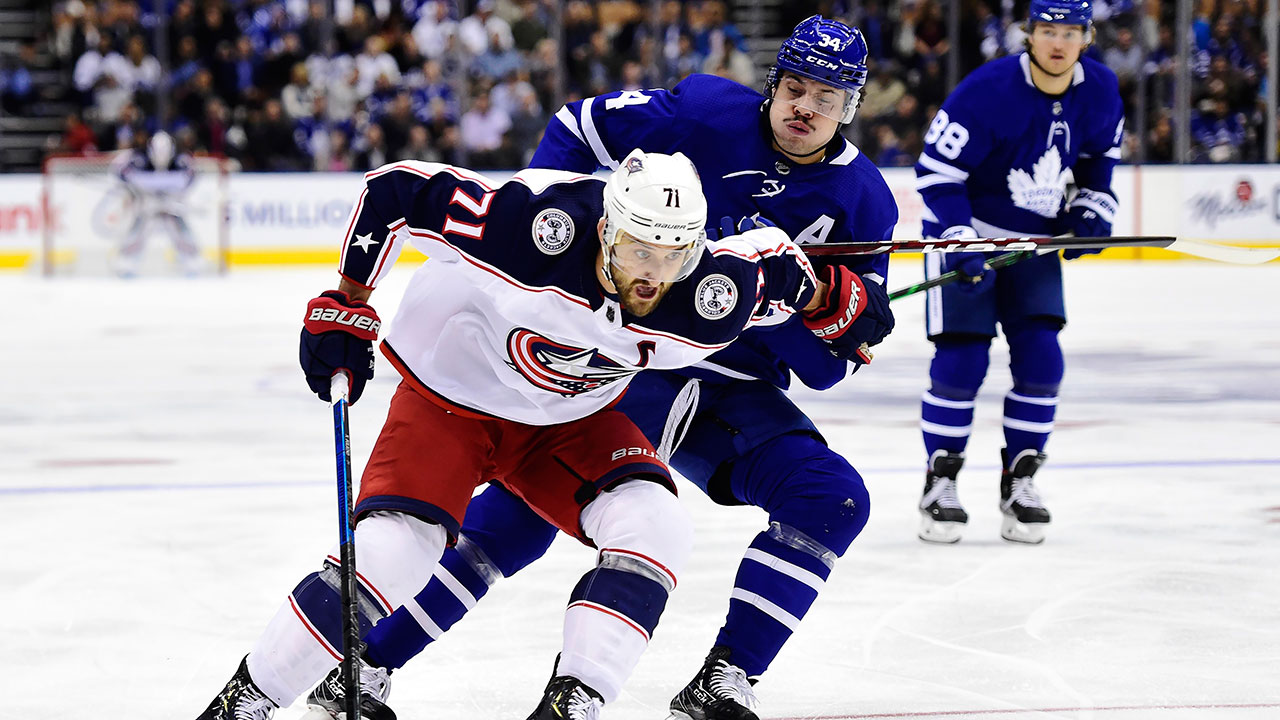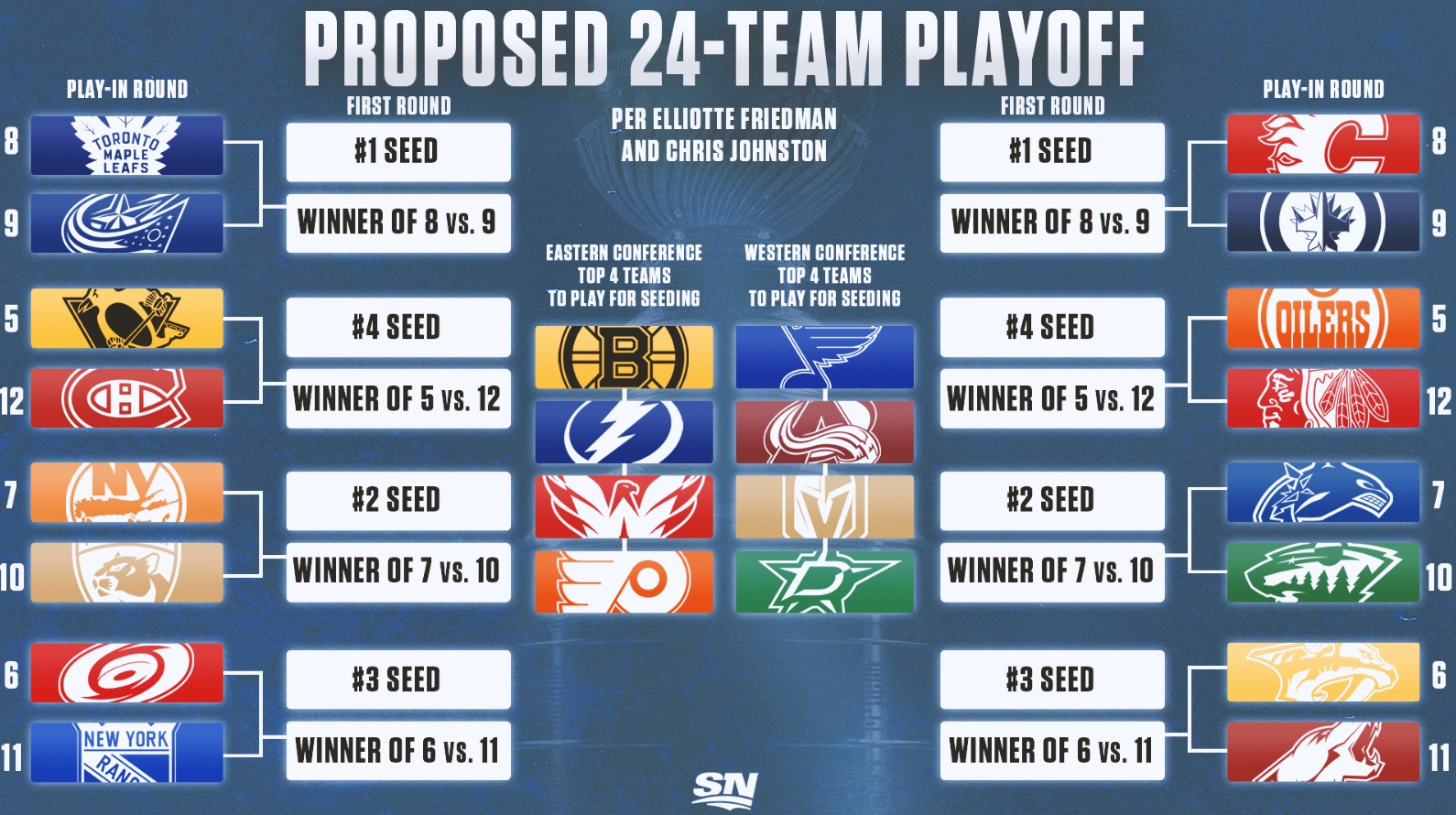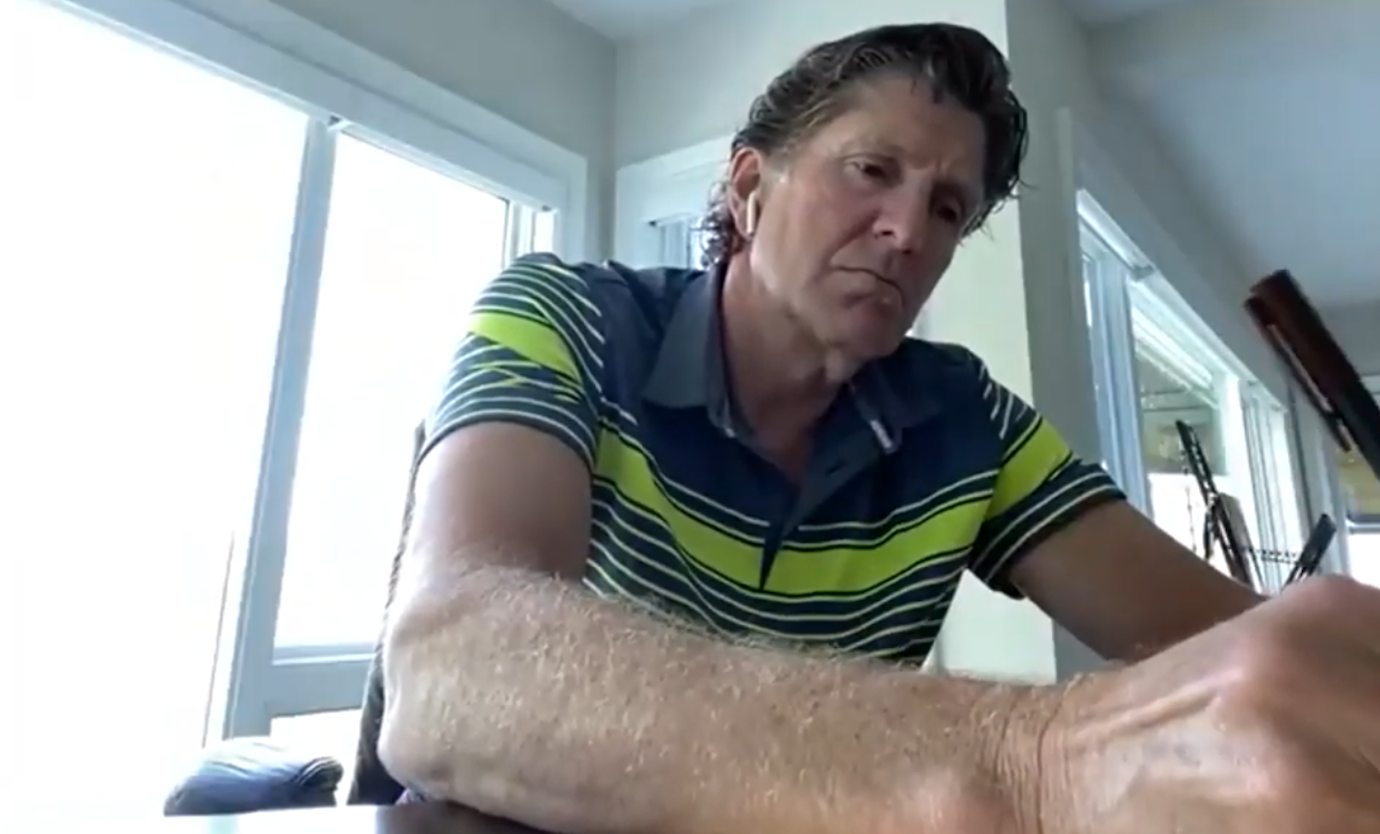
A quick mix of the things we gleaned from the week of hockey, serious and less so, and rolling four lines deep. I ate the pizza. All by myself. Nobody else ate the pizza.
1. For the first time in two and a half months, I feel genuinely optimistic we’re going to see a 2020 Stanley Cup champion.
Maybe you do too.
Maybe we’re delusional.
But hope feels nice, my first tee time is booked, the glass is half full, and I’m guzzling like a kid who just discovered free refills.
As the players voted in favour of the proposed 24-team tournament Friday, the transition from “We’re considering all options!” to “We’re taking steps to execute this specific plan!” has given us something tangible to look forward to — or bicker about.
“As much as there is always debate,” Calgary Flames GM Brad Treliving said Friday, “if the worst thing in our day right now is determining if there are 24 or 20 or 18 or 16 teams in a playoff, we’re having a pretty good day.”

Yes, it’s imperfect, but have you looked outside?
At the pause, the Montreal Canadiens had a zero per cent chance of making the traditional playoffs, per SportsClubStats.com. The Chicago Blackhawks had a 2.6 per cent chance. The Arizona Coyotes had a 16.6 per cent shot. And the resurgent New York Rangers’ odds were at 21.8 per cent.
Now, the chances are great that at least one of them will upset their play-in opponent, who proved better over 70 or so games (that would be Pittsburgh, Edmonton, Nashville and Carolina, respectively). The shorter the series, the more it favours the wild card.
Three of those life-raft clubs represent massive TV markets. Hockey is entertainment. It’s a business. And this format satisfies on both counts.
Pittsburgh’s NHLPA rep, Kris Letang, told Sportsnet’s Elliotte Friedman Friday night that the Penguins voted yes to the setup, and beat reporter Rob Rossi reported the vote wasn’t even close.
“There’s no perfect way to do this, because it’s not like we’ve ever been through this before and there’s a script to follow,” Blues captain Alex Pietrangelo told Good Show Friday.
“There’s not going to be any way to do this that satisfies everyone,” echoes Tampa’s Alex Killorn. “We’re just going to try to make it as fair as possible.”
Did Montreal earn their way into equal footing as Pittsburgh? Nope. But if the Canadiens can reel off 19 wins in two months against five teams supposedly better than them, arguing they didn’t deserve that shiny prize at the end will make you look foolish and cranky.
2. So, I’m not complaining, but…
I do wonder about the intensity of the three round-robin games each of the top four seeds in the conferences will play. Not only are these not do-or-die contests, but “winning” the top seed doesn’t guarantee the easiest Round 1 opponent.
The top seed in the East, for example, will definitely play Toronto (7) or Columbus (8). So even if Montreal (12) upsets, the No. 1 seed could face a superior first-round opponent than the No. 4 seed.
Also, there is a bit of magic that happens when a squad survives the danger of elimination and enters the next stage of their bracket hardened and confident.
“If that’s the situation, I think there could be somewhat of a disadvantage. I know when you’re playing a team that’s been battling and actually went through a playoff series, it’s a lot different than playing a couple exhibition games,” Killorn concedes.
“The top teams that have a bye, I don’t know how competitive their games will be going forward, whereas the teams that are in the bottom will be playing playoff games right away, and potentially they will be more prepared for the real playoffs.”
Something I’m curious about: Since the best-of-five play-in round and the round-robin games will not technically be part of the Stanley Cup Playoffs, are they a continuation of the regular season? Can they impact individual stats, the Rocket Richard Trophy race, Alex Ovechkin’s bid for 50, James Neal’s strive for 21, my fantasy league?
3. A Mike Babcock sighting!
Seldom seen or heard from publicly since his firing from the Maple Leafs six months ago, Babcock donated a few hours after his morning waterski Wednesday to be a guest on a coaching and leadership seminar for McGill University.

Babcock asked questions of his own to presenters Peter Smith, coach of the McGill Martlets, and Jamie Kompon, associate coach of the Winnipeg Jets, then fielded a few from participants.
Gotta say, I kinda missed the Babtalk.
• On the value of team-building activities: “I’ve been to every kind of professional thing you can think of, from ropes courses to camping to curing with gold-medal skips to canoe racing. Often the group of players you have determines the success of a team-building event. It isn’t the event; it’s the people.
“Team building to me: When you pay the price. A 250-pound D-man is coming down the wall to run you over and you get it out? That’s team building. When you lay down in the last second and block a shot? That’s team building. When you get into the room, you make each other better. You make each other accountable. And people love you for doing it. Sometimes we get confused with what team building actually is.”
• On managing superstars: “What I found over the years is, this isn’t as big a deal as you might think. The best players want to be the best players. They want to be great. They want a partnership with you. [Patrick] Kane’s rules are different than someone else’s rules. [Pavel] Datsyuk’s rules are different. [Auston] Matthews’ rules, [Mitch] Marner’s rules are different because they have a different skill-set. They don’t need you every time something goes wrong for you to be reminding them. But what they need is parameters.
“The best players have a skill-set and a feel. They don’t turn the puck over that much anyway because they have that skill-set to handle the situation. I think understanding the parameters for them and having a partnership with you is what it’s all about.”
• On how to tell your team has curated the right culture: “You play the last game in pro hockey and you know you’re never going to be together again — the guys don’t want to take their equipment off. They don’t want to leave; they want to be together. They create a family culture where everyone can be important. Everyone’s accountable. Everyone’s committed. In the end, those are the pictures that go on your wall, because the ones that you didn’t create that in, they didn’t win.”
• On turning practice into internal competition: “The harder they compete against one another, the better they’re going to become. … As soon as you keep score, the energy level goes through the roof. And that’s what they want to do — they want to compete. It doesn’t matter if it’s a one-on-one, small-ice game, a two-on-one, a forward versus a D, a line competition, it doesn’t matter. But they want to compete. That’s where the fun is.”
4. Kompon’s presentation was fantastic, as he detailed the vast differences head coaches Joel Quenneville and Darryl Sutter have in their approach to winning the Stanley Cup (Kompon served on both the Blackhawks and Kings staffs). Different styles, same champagne (hint: One was more of a players’ coach than the other).
Kompon recalled the defensive-minded Quenneville’s reluctance to put a young Kane out in the final two minutes with the lead because he was worried Kane might cheat for offence. Kompon encouraged a conversation, a trust.
“Kaner knew if he took this responsibility, that was another minute, two minutes on the ice. Another 10 points a season. Easy for him. He can put the puck in the [empty]net from the other end with his eyes closed,” Kompon said. “We never had a problem with him waiting out in the neutral zone or anything. He was right where he needed to be defensively.”
Kompon broke it down plainly: Players crave touches with the puck. That leads to confidence. In turn, that leads to more ice time and, likely, more points.
“Then, ultimately, what do you do? You get paid,” Kompon said.
“We got Mark Scheifele and Blake Wheeler. They take 50 to 100 pucks off the boards every day, before or after practice. They know they need that, so it’s second nature.”
5. Ottawa 67’s centre Marco Rossi was rewarded for a video-game-esque OHL season by winning the circuit’s MVP award, the Red Tilson Trophy.
Rossi’s 120 points (39 goals, 81 assists) in 53 games topped all juniors in the Canadian Hockey League, and his two-way, all-situations excellence has made him a plus-120 player over his two OHL seasons (he’s also a 58.5-per-cent face-off man).
No wonder why the top-10 2020 draft prospect has no interest in a third junior year.
“In my opinion, I’m not focusing on playing in the junior hockey league anymore. I try to focus on pro hockey,” the confident 18-year-old said Thursday.
“Ask about me in practice, or like anywhere where I have to compete, I’m probably one of the hardest-competing guys that they know. And I just hate to lose. I try to win every situation I can… I hate to just practice easy.”
As he buries his disappointment of being denied another run at the Memorial Cup with a strong squad and awaits the draft, Rossi is training twice daily back home in Austria.
He doesn’t hide the fact that he used all the positive press for contemporaries Alexis Lafreniere and Quinton Byfield as fuel for his tear through Ontario.
“Of course,” Rossi said. “I could hear they were talking so much about them, and it just motivated me, and I just wanted to be better than them.”
Love it.
Rossi’s 2.14 points-per-game pace not only led the OHL, but it’s the highest such figure by a Red Tilson Trophy recipient since Erie’s Connor McDavid (2.55) in 2014-15.
Prior to joining the 67’s in 2018, Rossi was playing pro in Switzerland — a 15-year-old weaving around some men more than double his age. He figured it took him all of six to eight games to acclimatize to the angles and speed of the smaller North American ice.
Ineligible for the AHL in 2020-21, Rossi concedes that whichever team he’s drafted to will have a say where he skates next season. But in his mind, if he’s not an NHLer, he’d prefer to set up goals professionally in Europe.
6. Cool touch by the QMJHL.
The league convinced Sidney Crosby to temporarily ditch quarantine dress code and don on a crisp shirt and jacket to announce its MVP, fellow Rimouski Océanic alum Lafreniere.
Lafreniere becomes the only back-to-back Michel-Brière Trophy winner not named Sidney Crosby.
We have none other than Sidney Crosby putting an end to the 2019-2020 #GoldenPuck Awards by announcing this season’s Most Valuable Player!
The former @oceanicrimouski star and @penguins captain won the Michel-Brière Trophy himself during both his seasons in the #QMJHL.
— QMJHL (@QMJHL) May 21, 2020
7. Heck of a column by Akim Aliu for The Players’ Tribune.
Right from the piece’s title, “Hockey Is Not for Everyone,” a reality check for the NHL’s Hockey Is for Everyone initiative, you know you’re in for some required reading.
To think, Aliu’s brave article arrives during the same pause that has seen Rangers prospect K’Andre Miller subjected to racial slurs during a video chat, Bill Peters land a head-coaching job overseas and the NFL explore hiring incentives to hire non-white coaches and general managers.
Aliu doesn’t stop at detailing his own attacks by racists in hockey; he tries to look at solutions.
“But what we can do is promote diversity. I believe that the NHL should adopt something like the Rooney Rule, which requires NFL teams to interview minorities for head coaching and senior football operation positions,” Aliu writes.
“We should be showing off the diversity our game is capable of having. This has an immediate impact on youth involvement. Because I know there are kids like me out there who have a hard time seeing themselves in the NHL. Or there’s a little black boy or girl who wants to be an NHL coach, but he or she doesn’t see anyone in the league who looks like them.”
Bravo.
8. Alex Killorn has himself a smash hit among Lightning fans with his Dock Talk Jetski-based mobile interview series.
Killorn is campaigning hard for his dream guest.
“Easy, man. Tom Brady,” says the talk show host, who doubles as a 26-goal scorer. “Write that in all your articles.”
Killorn, 30, has sold approximately 45,000 Dock Talk T-shirts, directing the proceeds to the Hillsborough Education Foundation, which helps children who don’t have food or educational resources.
“We’ve far exceeded our expectations,” says Killorn, a Harvard grad. “When I heard about it, it was a no-brainer to me. I think it’s really important to give back, especially to kids who don’t have the means to keep up with school.
“I just hope that with this money, a lot of these younger students that don’t have Wi-Fi or don’t have iPads can keep up with school and finish the school year the right way.”
As much fun as Killorn has had with Dock Talk, media isn’t the only route he’s considering when it comes time for a second career.
“If I’m gonna stay in the game of hockey, I would see myself more on the management side,” he says. “But if I didn’t go that route, it would be probably TV or something, because I don’t want to coach.”
9. Way back during the first training camp of 2019-20, Evgeni Malkin described new teammate Brandon Tanev as “probably the fastest guy in the NHL.”
Tanev is doing what he can to preserve his greatest asset during the pause. He ordered a set of Rollerblades online to work those intricate skating muscles. For sessions of 30 to 40 minutes, he’ll sprint up hills, take advantage of fresh air on a long-distance rip, or find an open parking lot to hone his stickhandling at speed.
“Obviously, it’s not the same as being on ice, but in a sense, it’s pretty darn close to what we’re used to. I think it’s just the joy of getting on a pair of skates. Whether they’re ice hockey skates or Rollerblades or feel the puck, it’s something we all cherish,” Tanev said on a Zoom conference.
“It kind of mimics the stride of being on the ice, as close as you can really get, so I’ve been trying to Rollerblade as much as I can, especially when the weather is nice.”
Keeping his mind sharp? Puzzles. And he’s graduated from a 500-piece to a 1,000-piece monster.
“It’s great to keep the mental aspect of yourself strong during these times,” Tanev explained. “To get your mind thinking and put it in situations like it is on the ice, when you’re trying to think through a certain situation, I think you’re able to do that when you’re looking for a piece.
“Maybe you’re getting frustrated and you don’t want to do it anymore — your mind is telling you to give up — but at the same time, that puzzle needs to be finished. And without that piece you’re looking for, the puzzle can’t be finished. It’s a mental grind at times, especially with the puzzles that have a ton of pieces.”
Which is why my own puzzle game never extended beyond this bad boy.
10. One relatively easy but necessary task for returning to play will involve the free agents agreeing to push back the end date of their current contracts from June 30 to whenever the playoffs conclude (since they don’t get paid during the postseason anyway and everyone understands the financial benefits of salvaging a Cup champ, this shouldn’t be a big concern).
With the Coyotes given a second life under the 24-team proposal — why couldn’t they upset Nashville in a best-of-five with a healthy Darcy Kuemper? — this presents one last chance for Arizona to audition for pending UFA Taylor Hall.
Hall, 28, has been forthright about his desire to commit with a contender after playing just five playoff games in (gulp) 10 seasons.
“I’m not saying he is going to sign here, but I definitely think we’re a team he’s very interested in staying with,” Rick Tocchet told Emily Kaplan and Greg Wyshynski on the ESPN On Ice podcast this week.
“You’re talking about a guy who, before this, was going to make a ton of money,” Tocchet said. “With this whole pandemic, like he told me, he doesn’t want to go through another year trying to play on a one-year contract. He wants to get settled somewhere. So, he’s got a lot of different options that [he has to]weigh.
Surely, a deep Cinderella run or, conversely, a swift exit could factor into Hall’s decision.
11. The slick commemorative Terry Fox edition of the Adidas Orion shoes (modelled something lovely below by Ron MacLean) sold out fast.
In celebration of the 40th anniversary of Fox’s Marathon of Hope, 100 per cent of the net proceeds were donated to The Terry Fox Foundation to support cancer research. Brilliant.
But that hasn’t stopped some people from reselling them for as much as 10 times their $130 retail price on eBay. Ugh.
Crossing my fingers Adidas does another, um, run.
12. The Tooth Fairy has been declared an essential worker.
The most Canadian way to pull a tooth
: nicole_grennier/IG pic.twitter.com/kFhGFwtAsB
— Hockey Night in Canada (@hockeynight) May 22, 2020




